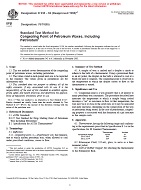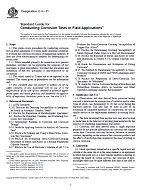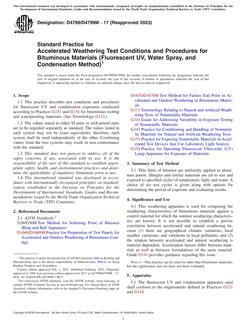1.1 This dye-penetrant test method covers a means of evaluating solid fiberglass all-roving reinforced pultruded rod or bar stock for longitudinal wicking. There are generally three mechanisms that promote wicking, any or all of which may be operating at a given time.
Note 1 – The specimen’s cross-section may reflect delaminations, longitudinal continuous voids, or the presence of hollow fibers, or all three. Occasionally these flaws may be detected by this test, but other tests are usually required.
1.2 The results of a wicking test are dependent on specimen type and size, penetrant type, time of exposure in the penetrant, penetrant viscosity, etc. Any attempt to use a wicking test to establish specification criteria should be made with great care.
1.3 The values stated in either SI units or inch-pound units are to be regarded separately as standard. The values stated in each system may not be exact equivalents; therefore, each system shall be used independently of the other. Combining values from the two systems may result in nonconformance with the standard.
1.4 This standard does not purport to address all of the safety concerns, if any, associated with its use. It is the responsibility of the user of this standard to establish appropriate safety and health practices and determine the applicability of regulatory limitations prior to use. For specific hazard statements, see 10.3 and 10.6.
Note 2 – There is no known ISO equivalent to this test method.
Product Details
- Published:
- 09/01/2009
- Number of Pages:
- 3
- File Size:
- 1 file , 71 KB
- Redline File Size:
- 2 files , 140 KB


